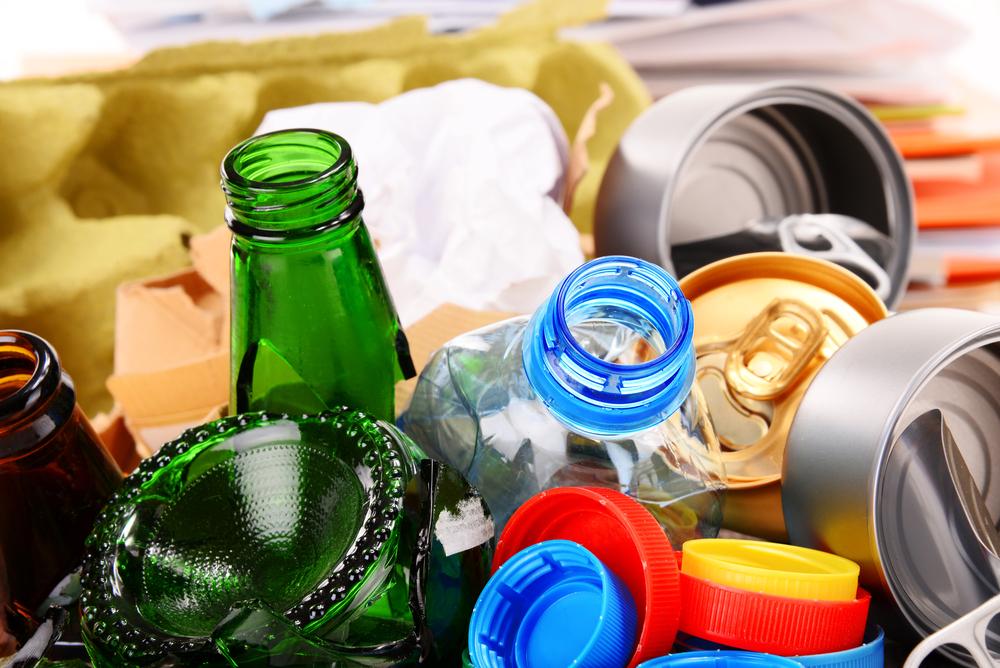Recycle
Recycling has big benefits—it lowers climate emissions and saves resources and energy. On the other hand, garbage sent to the landfill creates methane, a strong greenhouse gas that is 35 times more powerful than carbon dioxide. Recycling just makes sense—it is free, easy to do, and can save you money!
Your Impact
Action Steps & Tips
Introduction
 Most communities now have curbside recycling or other community recycling programs. Since recycling has become more common, we often don’t think about the benefits. But recycling makes a big difference! Here are a few benefits:
Most communities now have curbside recycling or other community recycling programs. Since recycling has become more common, we often don’t think about the benefits. But recycling makes a big difference! Here are a few benefits:
Recycling saves both resources and energy. For example, when you recycle paper, we don't need to cut down more trees to make new paper. Also, recycling saves all the energy that goes into finding and extracting or creating new resources for production.
Recycling reduces harmful methane emissions. When garbage goes to a landfill it creates a dangerous greenhouse gas called methane, which is over 30 times stronger than carbon dioxide in warming our climate. By recycling, you help reduce methane emissions—an important part of addressing climate change and protecting our future.
Recycling is easy to do and can save money! Most communities have curbside recycling or other community recycling programs. These programs have expanded in recent years and now take many more items. If you increase your recycling enough to reduce the size of your garbage bin, you can often save money on your monthly garbage bill. Also, some items have value and you can get cash for recycling them.
Take a moment to learn about your local program and get started!
1Find out how your local program works
Find out what your local program accepts. Look in the resources section below for links and information on your community program or contact your city hauler for information. Many items are often included in curbside service, which makes it very convenient to participate. However, some items that are harder to recycle may be part of a drop-off or occasional pickup program. Check for these additional community recycling services.
Check local recycling centers for buyback options. In addition to community recycling services provided, there are also often local recycling centers where you can bring your materials and get money back! Some items have a higher value, like aluminum cans, copper or other metals, and some electronics. Check out your local recycling centers to see if there are some items worth collecting and taking in for cash.
2Set up a bin and start recycling!
Set up bins to collect materials. After you learn what your program takes, think about what bins or set up will help you recycle. Generally, the most convenient place to have a bin is in the kitchen for bottles, cans and other items. However, you might want to also have a small bin or box in a home office to collect paper, magazines or newspapers. You might even want to have a small box in the garage to collect things like batteries and small electronic items as well.
Post the list of items accepted. Your community program will often have colorful how-to information sheets on what items they take. Post this on the refrigerator or somewhere else in your house to help remind everyone in your home of what you can put in the bins. One tip—for anything that has food in it, remove the food and give it a quick rinse if it is really dirty. This will help with odors in your bin and will also help your materials be ready for the highest value for reuse.
What happens to my stuff? Ever wonder what your stuff becomes after you recycle it? Even the most commonly recycled items can become some surprising stuff. Recycled paper and cardboard often become more paper and cardboard. However, you can also use recycled newspaper to insulate walls and attics. Recycled plastics are used to create everything from soccer balls to carpet, clothes, furniture and more. Recycled metal cans can become bike or car parts or help make new appliances. Your stuff becomes new stuff and helps save energy and resources!
Another way to reduce garbage going to the landfill is to compost. Learn more on the Compost Action page.
Extra credit: Buy Recycled!
Complete the circle and buy recycled! The next time you are shopping look for the recycled symbol. Buying recycled products is about more than just paper! From clothes to kitchen countertops, recycled items are everywhere. Every time you buy a recycled product you are helping to save energy and precious natural resources.

